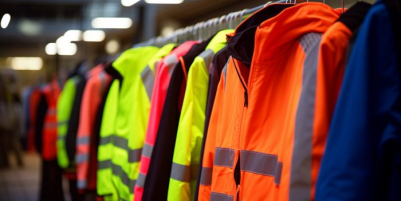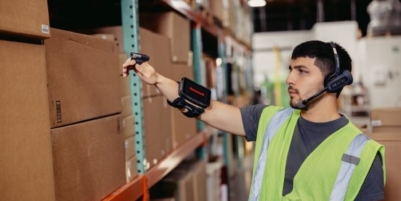-
DATA ANALYSIS – THE FOUNDATION OF EVERY PEAK SEASON - December 5, 2025
-
Creative education specialists Creative Hut give 3PL full marks for onboarding excellence - December 5, 2025
-
Unlimited Industries raises $12M to build the AI construction company that will power America’s future - December 4, 2025
-
Scottish Leather Group gets full-support solution from Rushlift - December 4, 2025
-
Etaily lands strategic investment from Japan’s SMBC – bringing total funding to $24M for Social Commerce enablement platform - December 4, 2025
-
Winners lift their LEEA Awards and raise the industry - December 4, 2025
-
Prism eLogistics and Brand Angels Partnership Gives Brands the Full Package - December 3, 2025
-
New data shows Tesla in danger of losing its way as European consideration to buy Chinese cars jumps 16% in 12 months - December 3, 2025
-
QUECLINK DEVELOPS SATELLITE-ENABLED VEHICLE TRACKING FOR UNINTERRUPTED TRANSPORT MANAGEMENT - December 3, 2025
-
Ocado Ads partners with Epsilon for people-based precision - December 3, 2025
Taken as a whole, automation across multiple channels can bring big rewards. Dan Migliozzi, Head of Sales at independent systems integrator, Invar Group, explains the concept.
For many manufacturers, wholesalers and retailers the management of fulfilment across multiple channels or routes to market continues to be a conundrum.
On the one hand, businesses need to ship a multitude of small orders, to private residences, pick-up lockers and small companies. But they may also need to ship by the palletload to physical stores, wholesalers and larger business customers. Hybrid models such as click’n’collect may also be in the mix, and the balance between different channels is constantly changing.
Of course, multichannel operations are not new and e-commerce is now a mature business model. However, there is surprisingly little consensus on whether these different channels are best served from a single location and common inventory, or whether the requirements of different channels differ so much in terms of order sizes, throughput, time imperatives that service from separate stocks, processes, even locations is more desirable. And either way, what does this mean for warehouse automation?
It’s become clear that for most businesses a presence across channels is an imperative. Established customers expect the convenience of ordering from, and delivery too, their residence or workplace, but as many formerly ‘pure play’ e-commerce companies have found, the lack of physical outlets where potential new customers can literally or metaphorically ‘kick the tyres’ is a serious constraint on market growth. So multi-channel is the way, and the business case for single sites serving multiple channels from a common inventory is fairly compelling.
Quite apart from savings on facilities – rents, rates, utilities, labour and the rest – a common inventory maximises availability of goods across all channels. The business needs less stock, it doesn’t have to transfer stock between locations, and demand forecasting is simplified as it allows a focus on how much will be sold, less about how it will be sold. Consolidation also greatly simplifies the increasingly expensive problem of reintroducing returns to the available inventory.
Inter-channel ratios vary enormously, but we commonly see businesses with a roughly 70:30 split between e-commerce and bulk/b2b traffic. Often, if the latter were moving through its own dedicated facility it might well be uneconomic and the site considered for closure, but equally the firm cannot afford to abandon that amount of trade. A single operation with the ability to ‘flex’ across the different channels can help keep all channels profitable – and warehouse automation can make it viable.
With greater scale flexible automation brings many benefits, in the form of higher throughputs, reduction in errors, damage and wastage, along with lower labour requirements. And through the application of appropriate IT, there’s greater visibility and more accurate and timely management, all achieved in a single integrated system rather than as a number of separate – possibly incompatible – systems.
The mechanics of automated pallet-handling differ significantly to those required for picking and packing individual small items – although there can be a lot more commonality than you might think. And there are many technologies out there, such as AGVs, AMRs, shuttles, sortation systems, smart racking, cobots and automated aids to manual processes such as voice- and light-picking. Remember though that while the mechanics of automation may be specific to particular types of sku, automation itself is agnostic as to channel: it cares about weights, sizes, throughputs, not whether the order is pallets for a megastore or parcel post for Meghan.
Critically, the differentiator in automation for multi-channel fulfilment is not the mechanics but the intelligence. Intelligent warehouse systems orchestrate all the varied types and capabilities of automation, ensuring that goods and orders are routed as efficiently as possible, all the way from goods inwards (including returns) to dispatch. The ‘efficiency’ of the whole fulfilment operation is considered as a single machine engaged on many varied and potentially conflicting tasks, using techniques and technologies such as buffering to smooth and accelerate throughput.
Some of this intelligence is really quite straightforward – simple PLC codes to identify destinations and direct orders accordingly. In other areas though, warehouse software is becoming able to study ‘big data’ sets, whether these be from the warehouse’s own operations, or inputs from the likes of customer EPoS. Even in areas where demand forecasting is really difficult, software can begin to detect and anticipate fast movers, demand peaks, slack and busy periods, shifts between channels and take a forward view of stock reorders, carrier requirements and so on. It also makes the automation both flexible and scalable.
Despite what some vendors may infer, this sort of intelligent warehouse software isn’t AI, at least not yet, it’s ‘just’ very clever algorithms. But if intelligent software, along with the appropriate sensors and I/O devices, is properly designed into the automation solution, the data driven insights can really deliver the benefits of automation in multichannel fulfilment.
Those benefits are visible in the form that matters – lower costs, increased profits – across order processing, inventory management, routing, carrier selection, Quality Control, error reduction, and particularly in returns processing. Benefits come at a price, of course, but automation can be highly viable, indeed often essential, in consolidated multi-channel operations, whereas this level of sophistication may be quite unaffordable across a range of discrete single channel operations.
Further independent advice on transforming operational performance in the warehouse can be found at: www.Invargroup.com

































